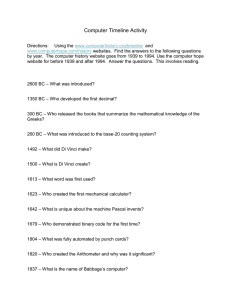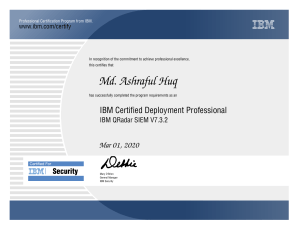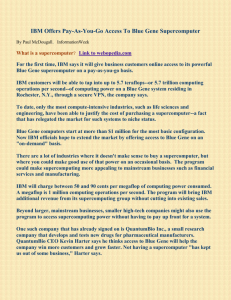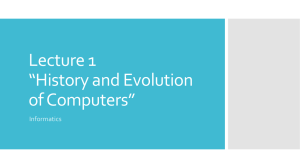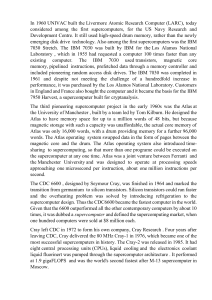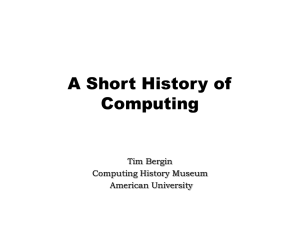Lesson 1 - Computer Technology
advertisement
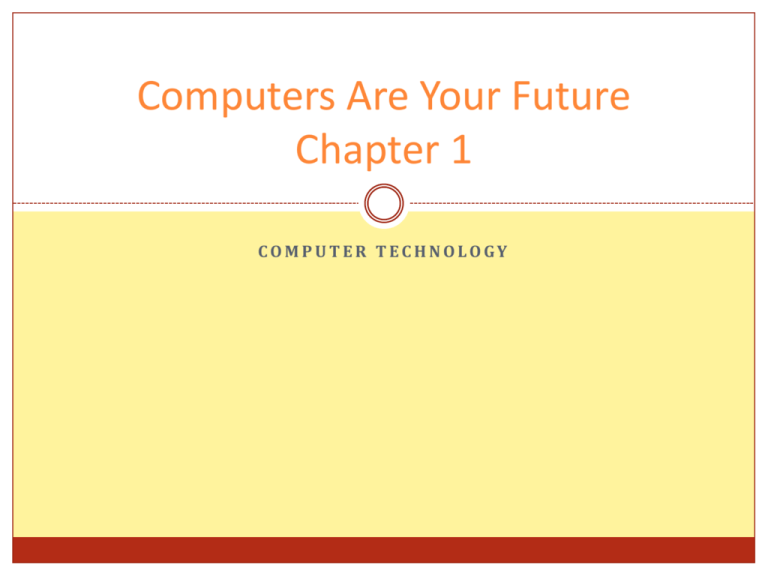
Computers Are Your Future Chapter 1 COM P U T E R T ECH NOLOGY Invention and Progression of Computers 1937 First Electronic Digital Computer 1943 Eniac 1951 UNIVAC 1—First Commercial Computer The physical size of this machine is enormous compared to the computers we have today. According to Wikipedia the ENIAC “contained 17,468 vacuum tubes, 7,200 crystal diodes, 1,500 relays, 70,000 resistors, 10,000 capacitors and around 5 million hand-soldered joints. It weighed 30 short tons (27 t), was roughly 8.5 feet by 3 feet by 80 feet (2.6 m by 0.9 m by 26 m), took up 680 square feet (63 m²), and consumed 150 kW of power. Input was possible from an IBM card reader, while an IBM card punch was used for output.” 1958 Jack Kilby of Texas Instruments invents integrated circuits Computers Get Faster and Smaller 1969 ARAPNET—Predecessor of the Internet 1975 First LAN 1976 First Apple Computer 1980 Bill Gates creates DOS 1981 IBM PC Introduced Computers Get More User Friendly and More People Use Them 1991 1992 1997 2001 2001 2003 2009 World Wide Web (August 6) Windows 3.1 is introduced DVD technology is invented 25 million users subscribe to AOL Internet service Internet Explorer MySpace Internet Statistics Computers for Home and Personal Use Affordable, small units that can be used at home OR at work. Handheld Devices Palm – Pocket PC Cell Phones Average Price - $200 - $500 Notebooks, Etc. Portable Cost $300 - $2,500 Desktop Also Called Micro Computer PC Cost: $250 - $2,500 Computers for Business Used in addition to or in conjunction with PCs, laptops, palms, etc. Mini Computer Sometimes used as a server for a small – medium sized network. Cost: $10,000 and up Mainframe Used as a server for medium to large businesses or organizations. Cost: $100,000 and up Supercomputer Largest, most powerful computers used today NASA Large Universities Government Cost: $ Millions Supercomputer Top 500 Computer A computer is a machine that performs four basic operations: Input Processing Output Storage Computer System A collection of related components that have been designed to work together. Hardware Computer System Software
